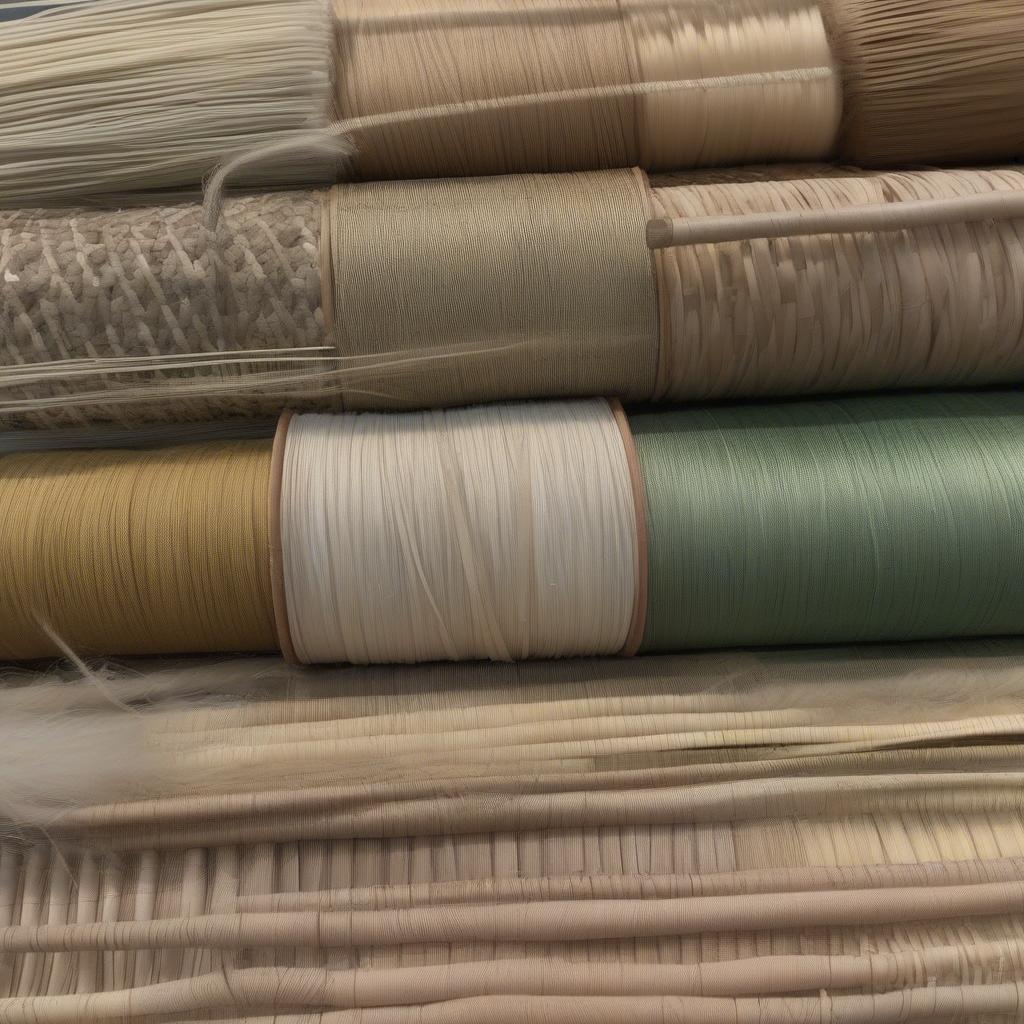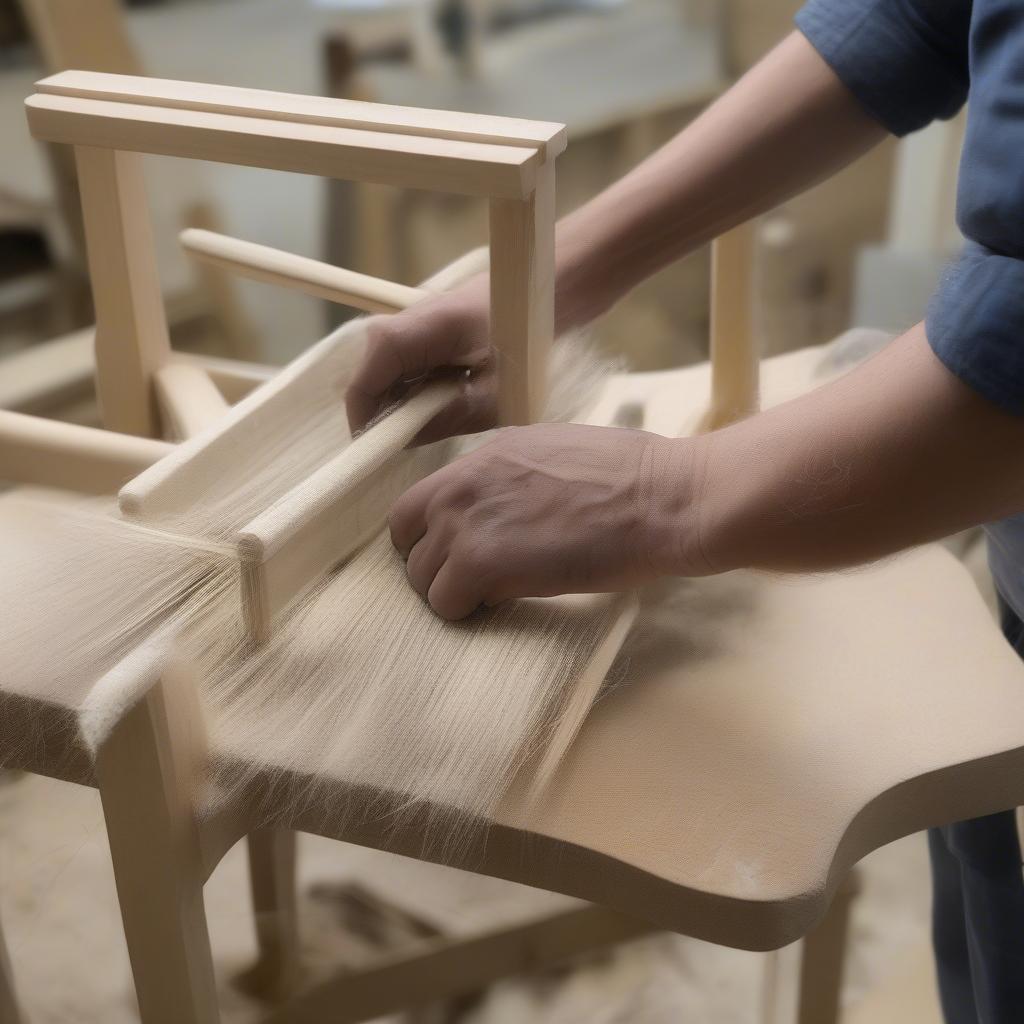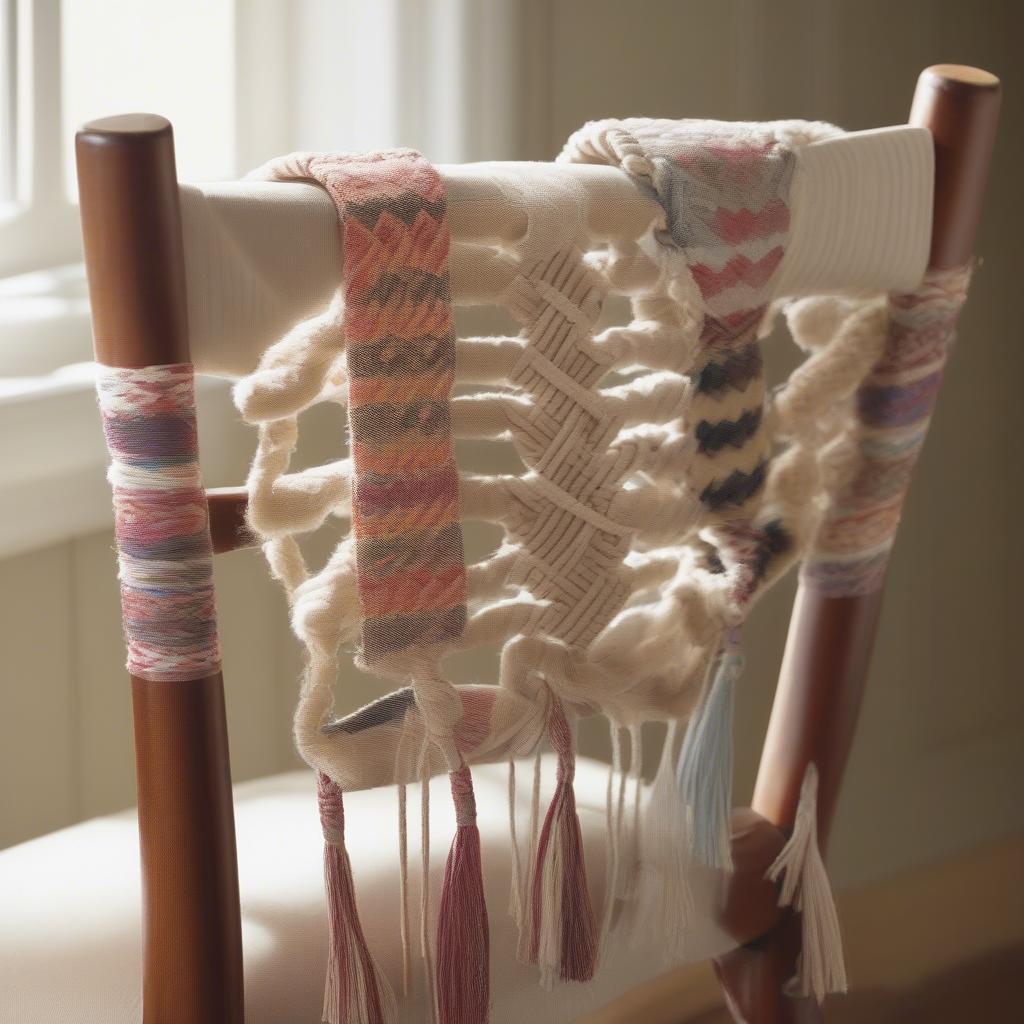Weave Chair
Instructions for Weaving a Chair Seat
Weaving a chair seat can seem daunting, but with the right instructions for weaving a seat for a chair, it can be a rewarding project. Whether you’re restoring a family heirloom or simply adding a personal touch to your furniture, learning to weave a chair seat opens up a world of creative possibilities. This article provides a comprehensive guide, covering various techniques and materials to help you achieve professional-looking results.
Choosing the Right Material for Weaving Chair Seats
Selecting the appropriate material is crucial for both the aesthetics and durability of your woven chair seat. Common options include natural fibers like rush, reed, seagrass, and Danish cord. Each material offers unique characteristics in terms of texture, strength, and flexibility.  Different Materials for Weaving Chair Seats
Different Materials for Weaving Chair Seats
Rush, a traditional choice, provides a rustic and comfortable seat. Reed offers a smoother, more refined look. Seagrass is known for its durability and resistance to moisture, making it ideal for outdoor furniture. Danish cord, a paper-based material, offers a modern and sleek appearance. Consider the chair’s style, intended use, and your personal preferences when making your selection.
What are the best materials for outdoor chair seats? For outdoor furniture, weather-resistant materials like seagrass or synthetic options are recommended.
Preparing Your Chair Frame for Weaving
Before you begin weaving, ensure your chair frame is sturdy and free of any loose parts. Clean the frame thoroughly and sand any rough edges to prevent snagging your weaving material.  Preparing the Chair Frame for Weaving If the chair has existing weaving, carefully remove it and clean the frame. This preparation will create a smooth and stable foundation for your new woven seat.
Preparing the Chair Frame for Weaving If the chair has existing weaving, carefully remove it and clean the frame. This preparation will create a smooth and stable foundation for your new woven seat.
Step-by-Step Instructions for Weaving a Chair Seat with Rush
Rush is a popular choice for its natural beauty and comfortable feel. Here’s a step-by-step guide to weaving a chair seat with rush:
- Soak the rush: Submerge the rush in warm water for at least 30 minutes to make it pliable.
- Start the weaving: Secure the end of the rush to the front rail of the chair frame.
- Create the base layer: Weave the rush over and under the rails, creating a tight and even foundation.
- Build up the layers: Continue weaving, adding more rush as needed, until the desired seat height is achieved.
- Secure the ends: Tuck the ends of the rush neatly under the woven layers.
- Allow to dry: Let the woven seat dry completely before using the chair.
weaving a chair seat in rush offers more specific instructions and visual aids.
“When weaving with rush, remember to keep the material moist throughout the process to maintain its flexibility,” advises renowned furniture restorer, Amelia Cartwright.
Exploring Different Weaving Patterns
Beyond the basic over-and-under weave, various patterns can add visual interest to your chair seat. Consider exploring techniques like the twill weave, herringbone, or even incorporating decorative knots.  Different Chair Seat Weaving Patterns weaving chair seats instructions provides a comprehensive resource for different weaving patterns. Experimenting with different patterns allows you to create unique and personalized chair seats.
Different Chair Seat Weaving Patterns weaving chair seats instructions provides a comprehensive resource for different weaving patterns. Experimenting with different patterns allows you to create unique and personalized chair seats.
Weaving a Metal Chair Seat with Paracord
Paracord, a durable nylon cord, offers a modern and versatile option for weaving chair seats, particularly for metal frames. This material is weather-resistant and comes in a wide array of colors. how to weave a metal chair seat with paracord gives detailed instructions for this technique. paracord weave chair also provides valuable insights. “Paracord weaving offers a great way to update metal chairs, giving them a fresh and contemporary look,” shares craft expert, David Miller.
Macrame Weaving for Chair Seats
Macrame, a knotting technique, can create intricate and beautiful chair seats. This method uses cords or ropes to create a variety of patterns. macrame weaving chair offers inspiration and tutorials for incorporating macrame into your chair seat projects.
In conclusion, learning instructions for weaving a seat for a chair can transform your furniture and add a touch of handcrafted beauty to your home. Whether you prefer the natural elegance of rush or the modern appeal of paracord, the possibilities are endless. By following these guidelines and exploring different materials and techniques, you can create unique and durable chair seats that will be cherished for years to come.
FAQ:
- What is the easiest material for weaving a chair seat?
- How long does it take to weave a chair seat?
- What tools do I need for chair seat weaving?
- Can I weave a chair seat with yarn?
- How do I repair a broken woven chair seat?
- Where can I buy materials for chair seat weaving?
- What are some common mistakes to avoid when weaving a chair seat?
Need more assistance? Contact our 24/7 customer service hotline at +84 388 951 999. We’re located in Hanoi, Vietnam and Tech Avenue, Suite 12, San Francisco, CA 94105, USA.
